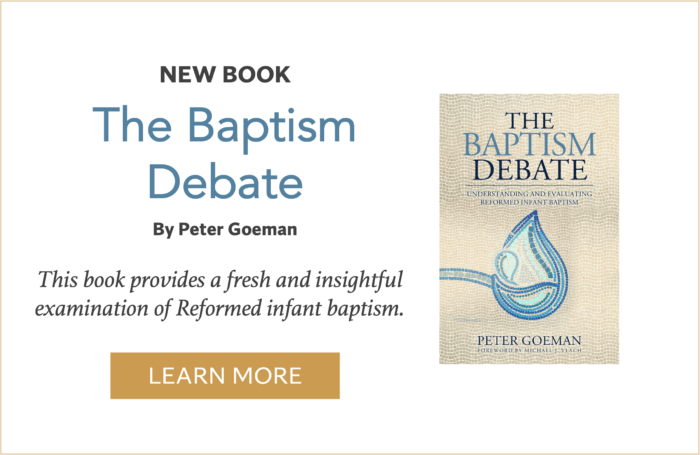Where did Baptism Come from?
When we read through the Bible from the Old to New Testament, a few things jump out when we get to the New Testament. One major surprise is the prevalence of baptism. Where did baptism come from? There doesn’t seem to be any indication of baptism in the Old Testament. However, the New Testament puts a significant priority and importance on baptism. What is the background to the baptism process?

It seems unlikely that John the Baptist invented baptism. There is no indication that the Pharisees or Sadducees asked John what he was doing. Instead, the New Testament paints the picture that people were familiar with baptism. Scholars have attempted to explain why people were already familiar with the process. There are typically four possible options that scholars put forward as the historical background for New Testament baptism.
- Mystery Religion Adaptation
- Qumran Lustration
- Proselyte Baptism
- Jewish Purification and Washing Rituals
The first two are not really valid options. There is no evidence that Jews or Christians spoke well of the washings performed by other religions. Jews like Philo and Christians like Justin Martyr spoke out against such pagan practices. The appeal to Qumran lustrations is really a subset of Jewish washings, so we will discuss that below.
Thus, the two most probable options which form the basis for New Testament baptism would be Jewish purification washings or proselyte baptism.
Proselyte Baptism as the Background for New Testament Baptism
Many have argued proselyte baptism is best understood as the background for Christian baptism.[1] According to the Talmud, proselyte baptism was part of three obligations for Gentile converts to Judaism. Circumcision, immersion, and sacrifice were all required according to rabbinic literature (b. Kerithoth 8b–9a).[2] One reason this view appeals to interpreters is that proselyte baptism mirrored New Testament baptism in that it represented an initiatory rite of commitment.[3]
However, a few issues make the connection between New Testament baptism and proselyte baptism difficult.[4] First, proselyte baptism focused on Gentile converts, but New Testament baptism was primarily for Jews first (and later expanded to include Gentiles). Second, there is the chronological problem. The earliest mention we have of proselyte baptism dates to the 2nd century AD.[5] The practice may have been earlier, but Philo, Josephus, and Joseph and Aseneth do not mention the practice. Because these early and extensive Jewish sources do not mention the practice (even when talking about Gentile conversion), it raises questions as to whether proselyte baptism existed prior to the 2nd century AD.[6] Finally, proselyte baptism differs in a few significant ways from Christian baptism. Ferguson summarizes,
The baptism of proselytes, in spite of some superficial similarities, had basic differences from Christian baptism. Proselyte baptism required witnesses but was self-administered; baptism by John and Christians had an administrator. In proselyte baptism the candidate was freed from pagan impurity; in Christian baptism one received pardon and regeneration as divine grace. The heart of the rabbinic conversion ceremony was circumcision, not baptism; baptism was the central act in Christian conversion. Proselyte baptism was for Gentiles; Christians baptized Jews as well as Gentiles. These differences are significant, even if the chronological difficulty can be overcome.[7]
Jewish Washings as the Background for New Testament Baptism
Jewish washing and ceremonial rituals seem to provide a better background to New Testament baptism. Within the Jewish Law there was strict regulation about water use, specifically sprinkling, pouring, and dipping.[8] For example, in Jewish Law the high priest was required to immerse himself five times on the day of atonement (cf. Yoma 3.3–4). Jewish washings were also commonly mentioned in non-biblical Jewish literature.[9]
Jewish Law also spent considerable effort detailing the need for full immersion in the cleansing rituals (Mikwaoth 8.5; 9.1–4; b. ʿErubin 4b). As Ferguson notes, “The requirements of the tractate Mikwaoth clearly point to a total submersion. For a valid immersion, water had to touch all parts of the body. Detailed regulations covered the size of an artificial immersion pool to permit a complete immersion and what constituted clean water to fill it.”[10]
After reviewing the various information and possibilities, Köstenberger summarizes, “Most likely, John’s baptism and Jewish proselyte baptism both harken back to Jewish ritual cleansing and bathing practices.”[11] Ferguson comes to a similar conclusion, “Jewish concepts and practices provide a more likely immediate context for Christian baptism than any other antecedents.”[12]
In sum, although it is difficult to be dogmatic about the historical backdrop to New Testament baptism, Jewish ritual washings and cleanings provide the most likely background for New Testament. Yet, even so, the Jewish rituals were self-administered and repeated, unlike New Testament baptism.[13] Therefore, regardless of where baptism comes from, we acknowledge that it was given new significance.
[1] For example, Waymeyer, A Biblical Critique of Infant Baptism, 89.
[2] Ferguson, Baptism in the Early Church, 76. Ferguson notes, “The argument was that the Jewish fathers entered the covenant at Sinai by circumcision, immersion, and the sprinkling of blood. Circumcision was based on Josh. 5:5; the sprinkling of blood (necessary for entering the congregation and partaking of consecrated things) on Exod. 24:5, 8; and immersion on the principle that there is no sprinkling of blood without immersion (cf. Exod. 19:10). Making proselytes was still possible, even though there are ‘no sacrifices today,’ on the basis of Num. 15:14–15 (‘There shall be for both you and for the resident alien a single statute, a perpetual statute throughout your generations’).”
[3] Köstenberger, “Baptism in the Gospels,” 12.
[4] For a good summary of these issues, see Paul K. Jewett, Infant Baptism and the Covenant of Grace: An Appraisal of the Argument That as Infants Were Once Circumcised, so They Should Now Be Baptised (Eugene, OR: Wipf and Stock Publishers, 1999), 63–68.
[5] Ferguson, Baptism in the Early Church, 78.
[6] Ibid., 76–77.
[7] Ibid., 82.
[8] Ibid., 63, fn17. Ferguson writes, “Note especially the tractates Negaʾim (e.g. 14.10—pouring oil into the hand, dipping the finger in it, and sprinkling the oil) and Parah (e.g. 12.11—dipping the hyssop and then sprinkling what adheres to it as distinct from immersing the body). In Berakoth 3.5 a person goes down to immerse himself, but if the water is foul, he pours clean water into it.”
[9] Ibid., 65–67. Among others, Ferguson mentions Tobit washing himself after touching a dead body (Tobit 2.5), a passage from the Testament of Levi, where Levi washed himself in living water (Testament of Levi 2.3), and Josephus’s reference to Leviticus 15:16 and the need to “go down into cold water” and immerse after nocturnal emission (Antiquities 3.263).
[10] Ibid., 64.
[11] Köstenberger, “Baptism in the Gospels,” 12.
[12] Ferguson, Baptism in the Early Church, 60.
[13] Köstenberger, “Baptism in the Gospels,” 12.


3 Comments
Warren Yeakel
I appreciated this article because it encouraged me to study what Scripture has to say about the topic. In fact, I quoted some of your scholarly words it in my discussion of baptism on my website (TheologyPoints.org –see post and slides on Baptism) in which I do not agree you’re your conclusions.
Peter Goeman
Glad the post provided a stimulus for your thought. I appreciate you quoting some of the post, even if you did not agree with my conclusion.
Doug Bookman
But can the mikvah washings be traced/linked to the priestly purification washings? Not very similar in protocol or meaning. Is there any other element of Jewish life under the Law that diaspora Jews would be eager to replicate, that thus might be antecedent to the mikvah, and that could provide a recognizable conceptual link to John’s baptism?